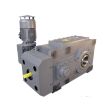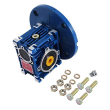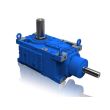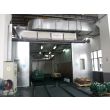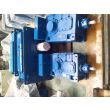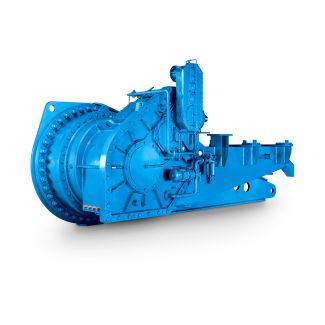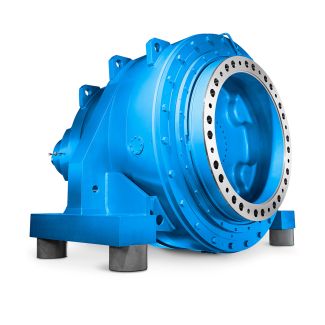mbH Flender MD Helical gear units vertical mo B3HH-7-C Bevel-helical speed reduction gearboxes B3
In stock
SKU
B3HH-7-C
$15,000.00
Flender/Flender Gear Units/Bevel-helical speed reduction gearboxes B3
power. Due to losses caused by inefficiency, output horsepower is always less than input horsepower. OVERHUNG LOAD The input or the output shaft of speed reducer can be subject to an overhung load; that is, to force applied at right
the output shaft of speed reducer can be subject to an overhung load; that is, to force applied at right  angles to the shaft, beyond its outermost bearing. Such force is shaft bending load resulting from gear, pulley, sprocket or
angles to the shaft, beyond its outermost bearing. Such force is shaft bending load resulting from gear, pulley, sprocket or  other external drive member. Besides the tendency to bend the shaft, the overhung load (that is, the radial force on
other external drive member. Besides the tendency to bend the shaft, the overhung load (that is, the radial force on  the shaft) is reacted to by the shaft in its bearings. Therefore, the overhung load creates loads that the bearings must be able to support without damage. SERVICE FACTORS Numbers which modify the loads which must be considered in selecting speed reducer are called service factors. They vary with the type of service in which the reducer is to be used, the kind of prime mover involved and the duty cycle. The service factor can be multiplier applied to the known load, which redefines the load in accordance with the conditions at which the drive will be used, or it can be divisor applied to catalog reducer ratings, thus redefining the rating in accordance with drive conditions. The service factor is usually applied to the speed reducer, but can also be applied to the name plate rating of the prime mover. REDUCTOR Boston Gears registered trademark for speed reducer having projecting input shaft suitable for mounting coupling, sprocket, pulley or gear. FLANGED REDUCTOR Boston Gears name for reductor furnished with an input flange suitable for attaching face mounted motor. RATIOMOTOR Boston Gears registered trademark for motorized reducer consisting of flanged reductor and face mounted motor assembled, sometimes referred to as gearmotor. SELF-LOCKING ABILITY Boston 7 Series reducers, under no conditions should be considered to hold load when at rest. BACK-DRIVING This is the converse of self-locking. Depending upon ratio and many variables, it is d
the shaft) is reacted to by the shaft in its bearings. Therefore, the overhung load creates loads that the bearings must be able to support without damage. SERVICE FACTORS Numbers which modify the loads which must be considered in selecting speed reducer are called service factors. They vary with the type of service in which the reducer is to be used, the kind of prime mover involved and the duty cycle. The service factor can be multiplier applied to the known load, which redefines the load in accordance with the conditions at which the drive will be used, or it can be divisor applied to catalog reducer ratings, thus redefining the rating in accordance with drive conditions. The service factor is usually applied to the speed reducer, but can also be applied to the name plate rating of the prime mover. REDUCTOR Boston Gears registered trademark for speed reducer having projecting input shaft suitable for mounting coupling, sprocket, pulley or gear. FLANGED REDUCTOR Boston Gears name for reductor furnished with an input flange suitable for attaching face mounted motor. RATIOMOTOR Boston Gears registered trademark for motorized reducer consisting of flanged reductor and face mounted motor assembled, sometimes referred to as gearmotor. SELF-LOCKING ABILITY Boston 7 Series reducers, under no conditions should be considered to hold load when at rest. BACK-DRIVING This is the converse of self-locking. Depending upon ratio and many variables, it is d| Model Type | Bevel-helical speed reduction gearboxes B3 |
|---|---|
| Gear Type | Bevel Helical Gear |
| Weight (kg) | 700.000000 |
| Ratio Range | 1 : 12.5…71 |
| Low Speed Output | Hollow shaft with keyway acc. to DIN 6885/1 |
| Nominal Torque | 21700 Nm |
| Mounting Arrangements | Horizontal mounting position |
| Manufacturer | Siemens AG |
| Country of Manufacture | Kiribati |
| Data Sheet & Drawings | mbH Flender MD Helical gear units vertical mo B3HH-7-C Bevel-helical speed reduction gearboxes B3 |

